
(Photo provided) Darienne Ciuro Sanchez, a Dual Language science teacher at Urbana Middle School tests the charge on a battery during a beadboarding activity for the Catalyzing Inclusive STEM Experiences All Year Round (CISTEM365) 2021 Summer Institute, held in July. Sanchez was one of 36 educators who are participating in the program during the 2021-22 academic year. An initiative of the Grainger College of Engineering, at the University of Illinois in partnership with the National Alliance for Partnerships in Equity, the program is designed to equip educators with the knowledge, resources, and support to provide students—particularly those who are underrepresented in STEM fields—with quality, informal STEM learning opportunities outside of the classroom through STEM clubs.
CISTEME365: Program prepares STEM educators to teach all students
Nov 30, 2021
This summer, a group of educators from across Illinois gathered at the 2021 CISTEME365 Virtual Institute to learn about engaging STEM activities they can do with their students—including building a projector with a lens and other materials—and the math, science, and engineering concepts behind them.
During their six days together, they also turned a metaphorical lens on themselves and their educational, political, and social systems, so that they could start to recognize their biases and systemic inequities that exist; understand the root causes; and ultimately, take steps to ensure that STEM opportunities for their students are equitable and inclusive.
“We all care about STEM and increasing participation of students who have historically been excluded and marginalized into these pathways,” said Meagan Pollock, a consultant, developer, and trainer for the National Alliance for Partnerships in Equity (NAPE). But because of biases and other factors we’re not always are of, we can unintentionally create environments that aren’t welcoming to or supportive of all students.
“That’s why we’re going to spend a lot of time really understanding the culture and climate of these environments, so that we can create places where students not only want to come and participate but stay,” Pollock continued.
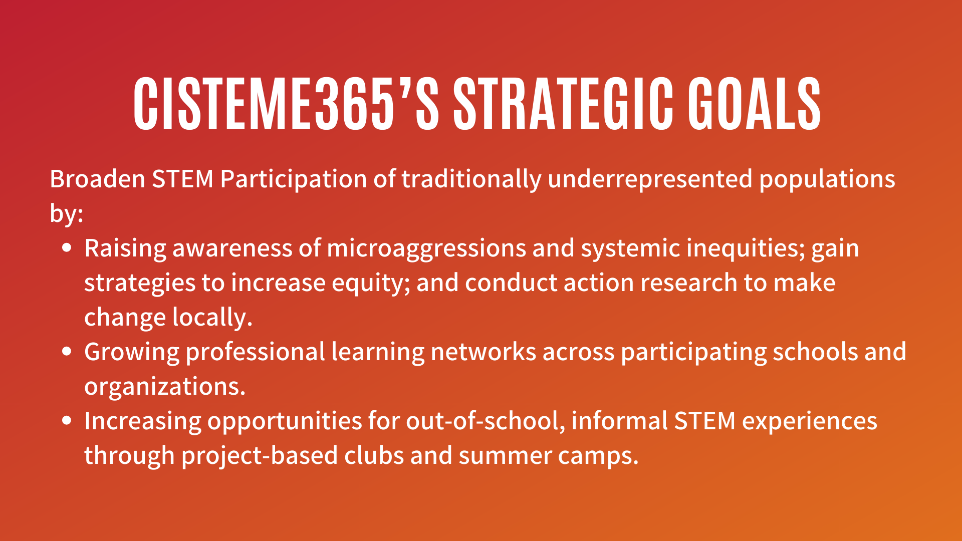
Each year, the summer institute kicks off CISTEME365 (Catalyzing Inclusive STEM Experiences All Year Round), an initiative of the Grainger College of Engineering, at the University of Illinois, in partnership with NAPE. The program is funded by a three-year grant from the National Science Foundation (NSF) and is now in the third year of the grant cycle.
The program was designed to equip educators with the knowledge, resources, and support to provide students with quality, informal STEM learning opportunities outside of the classroom through STEM clubs. One of the main goals: Broaden access and participation in STEM learning experiences that build technical knowledge and ability and offer insight into different STEM majors and careers among middle and high school students, particularly those who are underrepresented in STEM fields.
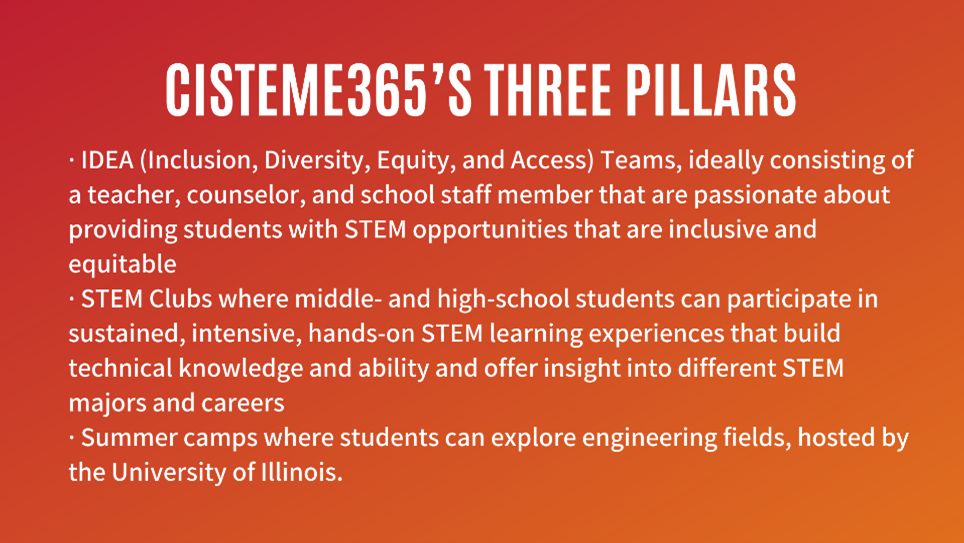
“This is many years of effort refining these activities,” said Lynford Goddard, a professor in Grainger’s Electrical & Computer Engineering Department and the CISTEME365 principal investigator.
The program started as a summer camp to teach girls about electrical and computer engineering, which Goddard launched in 2008-09 with a Motorola Foundation grant.
“Over the years, we’ve adapted and improved the curriculum. And most recently, (in 2020), we adapted it so it could be taught remotely,” he said.
“We want this to be an exploration”
This summer’s virtual institute—held July 12-23—drew 36 teachers, counselors, and other school staff from five middle schools, one high school, a 7-12 school, and three community colleges. It’s the program’s largest group yet.
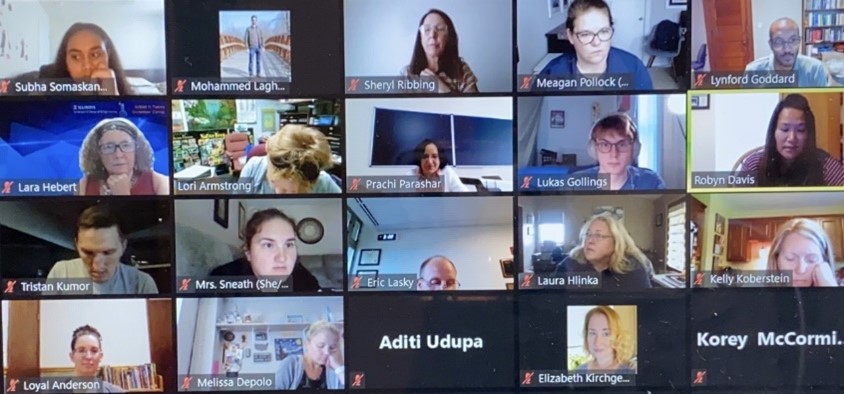 Participants in the CISTEM365’s 2021 Summer Institute hear a presentation in Zoom. Like last year, this year’s summer institute was held virtually due to COVID-19 restrictions.
Participants in the CISTEM365’s 2021 Summer Institute hear a presentation in Zoom. Like last year, this year’s summer institute was held virtually due to COVID-19 restrictions. Participants have access to the program textbook, other printed materials, and companion videos. They also received activity kits for their STEM clubs with all of the necessary supplies for 40-plus students.
Throughout the two weeks, participants also heard presentations on Grainger’s Engineering Pathways program, which guarantees admission to qualifying students interested in transferring to Illinois’ engineering program, and the ARISE (Academic Redshirt in Science and Engineering) program, which provides academically talented students from low-income backgrounds with the preparation and support needed to successfully earn engineering.
They discussed stem careers and internships that are available. They also had an opportunity to hear a panel discussion of industry partners—representing Motorola, Caterpillar, Discovery Partners Institute, and Exelon Corporation—on the STEM knowledge and skills that they are looking for in job prospects.
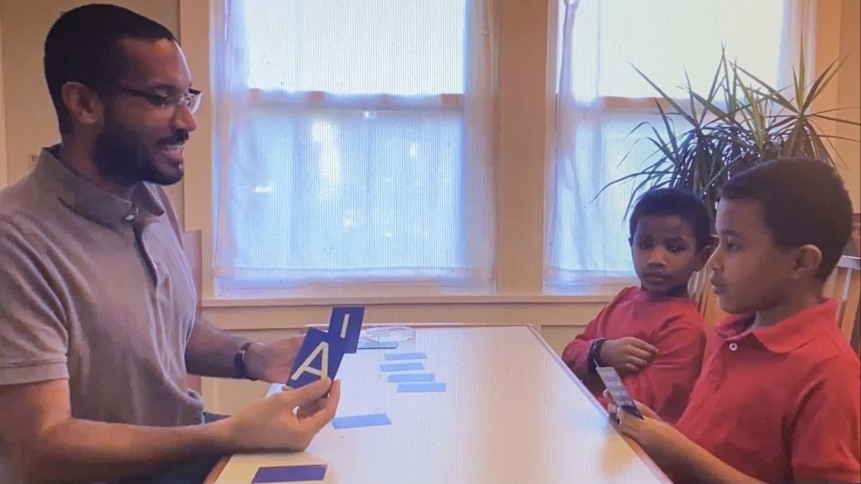
In this video, Lynford Goddard, a professor in Grainger’s Electrical & Computer Engineering Department and the CISTEME365 principal investigator, demonstrates how to play a card game, Oracle, with his sons. Goddard created the game to teach students about algorithms.
“That was just a great mix of folks who had great things to say about what they have to offer and what you all can do … to impact students,” said Lara Hebert, Grainger’s Outreach & Public Engagement coordinator.
Goddard—with assistance from ECE graduate students—covered much of the curriculum including lessons on optics, algorithms, engineering design, power and energy, and circuits and waves. For each lesson, they demonstrated a corresponding project-based learning activity, which the participants practiced during small-group breakout sessions.
For example, the first activity was a two-person card game called Oracle, which Goddard created to teach students about algorithms. “It’s one of my favorite activities,” he said. “It’s a little gamified, but it’s an activity that will give students exposure to learning about how computers work.” As Goddard and his sons demonstrated the game, he explained the rules: One player, the oracle, must transmit a secret message to the other player but can only answer “yes” or “no” questions. Depending on the level of difficulty, the player has four to eight cards laid out, each with a letter on the bottom side. Turning over only two cards at a time, the player must ask the oracle questions to put the letters in order and decipher the message.
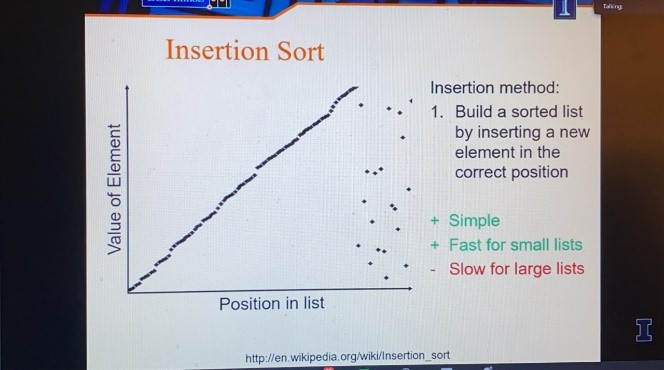
A slide from Goddard’s presentation illustrates insertion sort, one of the most common algorithms used by computers.
The goal is to develop an algorithm—a step-by-step procedure or a well-defined set of instructions used to solve a problem—to put the cards in order as fast as possible, Goddard said. He then showed the participants a presentation on some of the most common algorithms used by computers – the insertion, selection, bubble, merge, and quick sorts.
During another activity, Goddard showed the group how to make small projector using a convex lens, flashlight, a sheet of cardstock, and a printed transparency, to demonstrate optics—the study of the behaviors and properties of light and how light rays refract when they enter and exit a lens.
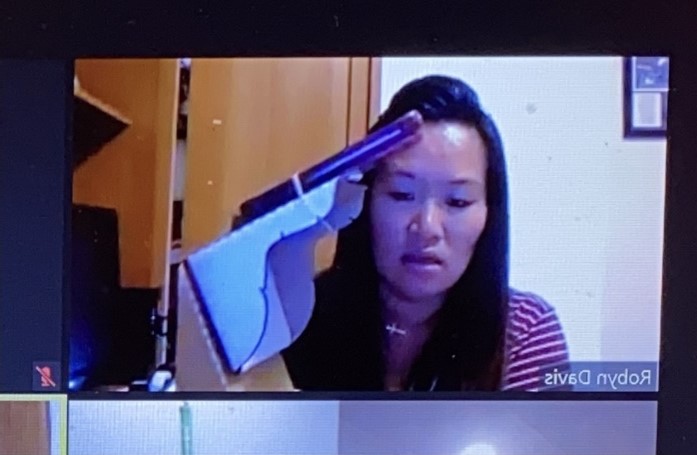
Robyn Davis, a social worker at Carbondale Middle School, presents the TuKam phone stand she built during an activity on engineering design principles.
“This field is called geometrical optics,” said Goddard, who then explained the geometry and graphing behind the activity. “And it’s one of those cases where students always ask, ‘When will I ever use this in real life?’ You can talk about these concepts.”
Participants also assembled a TuKam phone stand, which allows students to position a smartphone camera over their workspace, so they can share their work over Zoom; learned the engineering design principles behind it from the teacher who created it; and looked at how the design could be improved upon. They also tried breadboarding and building an LED circuit. “We want this to be an exploration,” Goddard said of the different activities. “We want students to have opportunities to try things out that they wouldn’t ordinarily try out.”
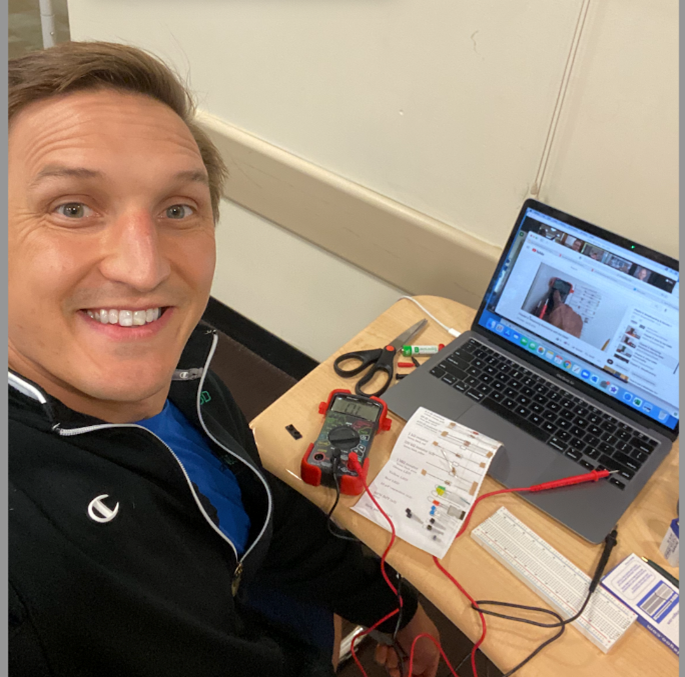
In a selfie, Tristan Kumor, a math teacher at Ridgewood High School, shows his beadboarding work during one of the hands-on STEM activities that educators practiced. The educators will do the activities with their students in STEM clubs.
“We have to build this into everything we’re doing”
Pollock—an engineer and computer scientist-turned-educator—provided the daily diversity and inclusion training.
At the beginning of the institute, she asked participants to set aside their good intent. “We can have the best of intentions,” she said, “but sometimes, we are unintentionally creating or contributing to environments … and building or upholding systems that continue to marginalize and exclude students. So much of this work, I think, is an ego check and helping educators recognize the things we need to modify to make sure we’re truly serving our students.”
Over the two weeks, participants examined how to combine educational equity and planning and providing STEM opportunities as well as teaching STEM. To do that, Pollock said, they had to understand things like stereotypes, prejudice, and bias; how stereotypes can become ideological beliefs held within one’s culture that lead to assumptions about certain characteristics; and how stereotypes, prejudice, and bias often operate in combination to influence our beliefs and behavior, among other things.
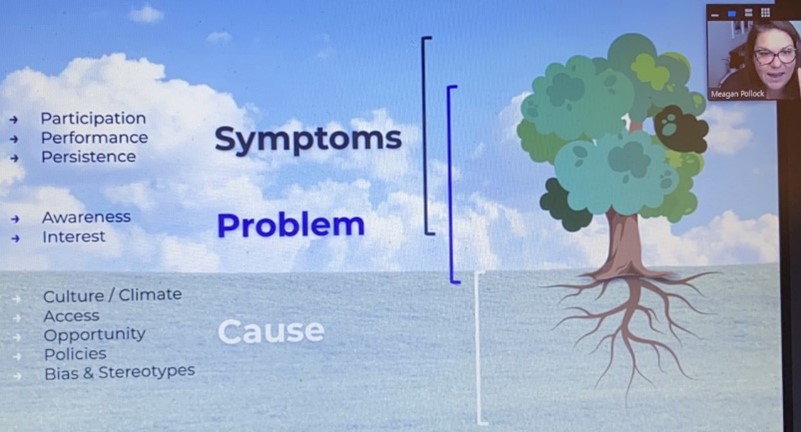
Meagan Pollock, a consultant, developer, and trainer for the National Alliance for Partnerships in Equity (NAPE), shown in the top right-hand corner, leads a presentation on discrimination and stereotypes on Zoom.
Participants learned the difference between equality—when everyone gets the same—and equity—and effort to give everyone what they need to succeed. They looked at how laws, education, employment, housing, healthcare, and other systems weren’t built with true equality in mind, and how that has led to a lack of access for people of color, women, and other marginalized groups and other systemic inequities.
“Remember: Students aren’t broken,” Pollock said. “We want to spend our time looking at how do we change the systems, not the students,” she continued. “This means we have to remove barriers and add in supports that help our students.” Pollock then asked participants to think of examples of equality at their schools, try to understand why they fail some students, and come up with ways to change the system—or policies and practices at their schools—and level the playing field.
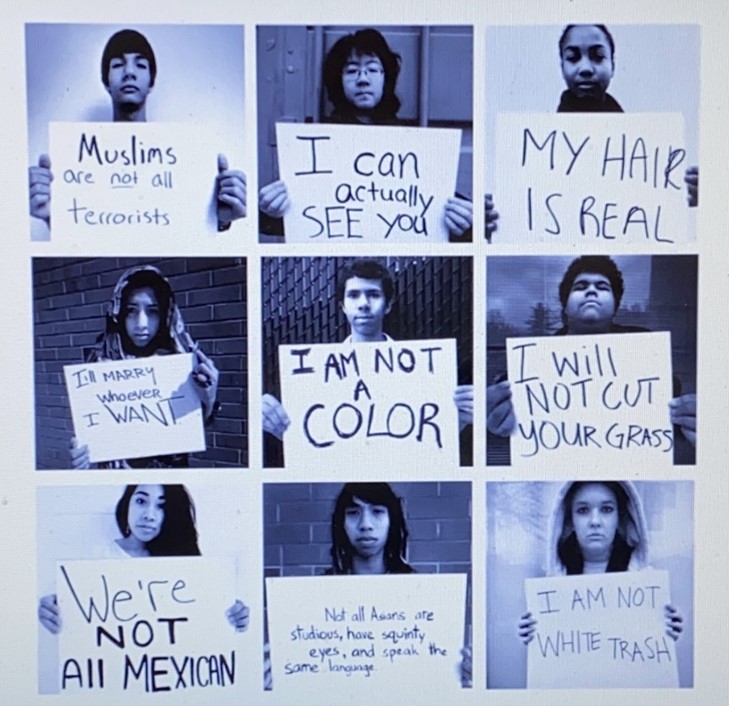
A slide from Pollock’s presentation shows people dispelling stereotypes about their ethnicity.
With STEM clubs, the participants said, schools might need to provide transportation, remote learning opportunities for students who have family responsibilities after school, even activities to involve the whole family. Pollock nodded.
“We have to think about and build this into everything we’re doing, so it becomes this practice of who is this serving, who is this not serving, and how do we adjust or adapt what we’re doing to make sure we’re being more inclusive in our practices,” she said.
“We need you and all of your voices”
While the summer institute has wrapped up, the hard work for the participants has just begun. As the educators prepare for the upcoming school year, they’re also working to open their STEM clubs by Oct. 1. That includes setting goals and outcomes; identifying roles and responsibilities; working on diversity and inclusion strategies, planning STEM activities, recruiting students; and involving student members in the organization and leadership. But they’re not doing it alone. Throughout the year, CISTEME365 program officials will touch base with participants once a month, starting with a virtual professional development session on Sept. 22. “We’re building on what we’ve been learning,” Pollock said. “We need you and all of your voices to contribute to the collective learning.
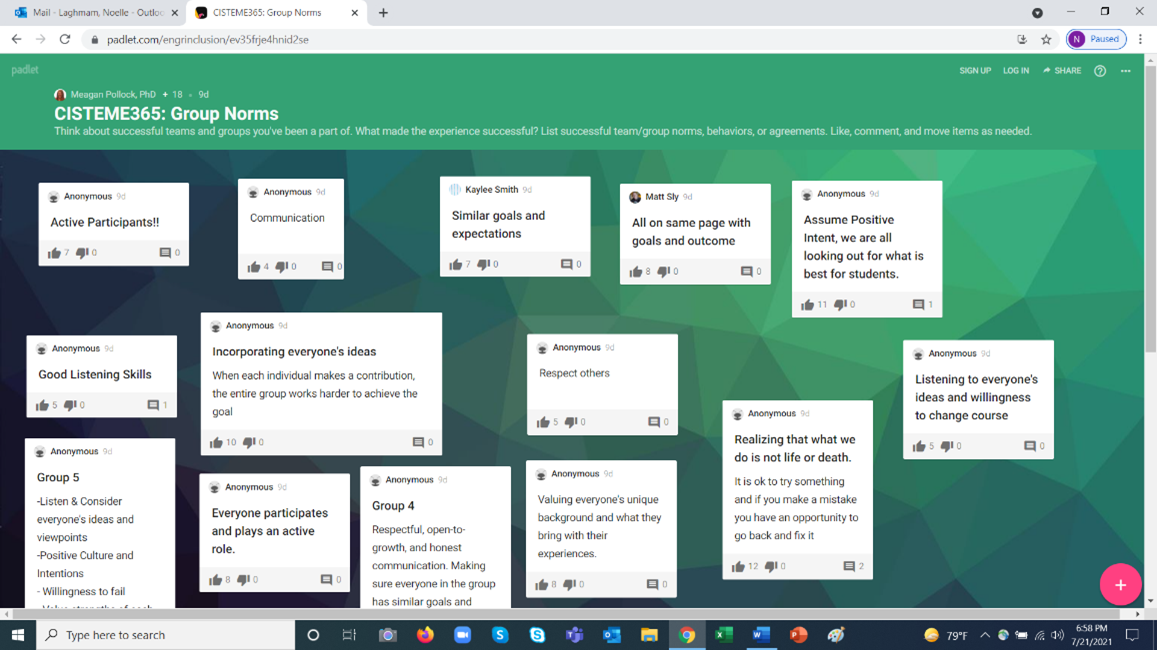
In one of the final exercises, participants shared their feelings about the summer institute and launching STEM clubs at their schools on virtual sticky notes.
“We fully acknowledge that many of you feel, perhaps, overwhelmed, and that’s normal. Just remember, you’re not alone. We’re here to help you and support you.” Once educators get their clubs going, Hebert said the group will begin talking about their individual Action Research for Equity projects, which they will present in May. She said program officials are crossing their fingers they’ll be able to host the participants on campus on Nov. 4-6 for more STEM lessons and hands-on training, as well as a tour of the Electrical and Computer Engineering building.
“It’s been an interesting evolution due to COVID, but we’re going to try to bring back some of those things that we lost last year,” Hebert said.












.jpg)
















